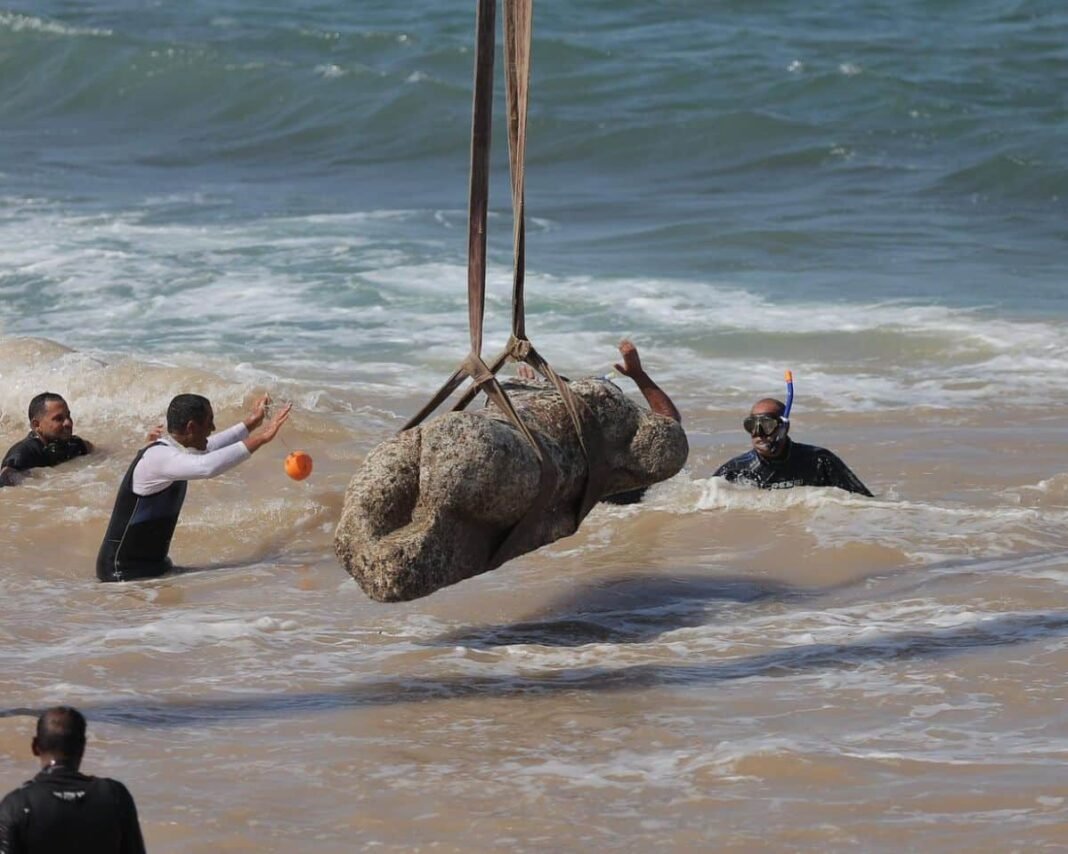
Archaeologists have recovered a series of ancient statues from the seabed near Alexandria, Egypt, offering new insight into a once-thriving city submerged for over two millennia. The discoveries were made in Abu Qir Bay, where divers and cranes recently brought several large sculptures and relics to the surface.
The recovered artifacts include royal statues, sphinxes, and carved figures that had been lying beneath the Mediterranean Sea for centuries. Experts say these ancient statues likely belonged to the city of Canopus, a prominent hub during the Ptolemaic (Greek) and Roman periods.
Alexandria, Egypt’s second-largest city, continues to yield significant finds from its coastal waters, reinforcing its status as a vital center of ancient history.
Buildings, reservoirs, and sacred structures were uncovered
The excavation revealed limestone buildings believed to have served various purposes, such as places of worship, housing, and commercial activities. Researchers also identified reservoirs and stone-cut ponds, which were possibly used for storing water and cultivating fish. These structures reveal a highly organized and developed urban landscape.
Among the most notable finds was a partially preserved sphinx bearing the cartouche of Ramses II, one of Egypt’s most renowned pharaohs. Other statues included a headless granite sculpture from the Ptolemaic era and the lower half of a Roman noble figure carved in marble. Many of the pieces show damage from centuries underwater.

The recovery operation drew attention on Thursday when cranes slowly hoisted the statues from the seabed as divers in wetsuits watched and celebrated from the shore.
Tourism and Antiquities Minister Sherif Fathi said the team can only retrieve selected items based on strict archaeological criteria. He emphasized that the majority of the ruins will remain submerged, forming part of Egypt’s underwater cultural heritage.
In addition to statues and buildings, researchers discovered the remains of a merchant ship, stone anchors, and a harbor crane near a 125-meter (410-feet) dock. The dock is believed to have operated through the Ptolemaic, Roman, and even Byzantine periods, supporting small boats and local trade.
Modern threats to Alexandria’s coastal legacy
The city of Canopus, along with the neighboring port of Heracleion, was lost to the sea due to a combination of earthquakes and rising water levels over time. These natural forces gradually swallowed the coastal centers, leaving them buried beneath the bay.
Today, Alexandria itself faces a similar threat. The city is sinking by more than 3 millimeters (0.12 inches) each year and is particularly vulnerable to the effects of climate change. According to the United Nations, even under the most optimistic forecasts, one-third of Alexandria could be underwater or uninhabitable by 2050.
As recovery efforts continue, officials say the finds will help piece together the daily life, trade, and religious practices of one of Egypt’s most dynamic ancient cities.


